Potřebujeme váš souhlas k využití jednotlivých dat, aby se vám mimo jiné mohly ukazovat informace týkající se vašich zájmů. Souhlas udělíte kliknutím na tlačítko „OK“.
ASTM E2361-13
Standard Guide for Testing Leave-On Products Using In-Situ Methods
Automaticky přeložený název:
Standardní Příručka pro zkoušení neoplachují pomocí in situ metody
NORMA vydána dne 1.4.2013
Informace o normě:
Označení normy: ASTM E2361-13
Poznámka: NEPLATNÁ
Datum vydání normy: 1.4.2013
Kód zboží: NS-45134
Počet stran: 6
Přibližná hmotnost: 18 g (0.04 liber)
Země: Americká technická norma
Kategorie: Technické normy ASTM
Kategorie - podobné normy:
Anotace textu normy ASTM E2361-13 :
Keywords:
antimicrobial products, in-situ methods, leave-on products, recovery techniques, ICS Number Code 11.140 (Hospital equipment)
Doplňující informace
| Significance and Use | ||||||
|
4.1 The United States has concentrated attention and testing efforts on surgical scrubbing far more than on hand care in patient-to-patient routines. Great Britain, the originators of infection control nursing, have always had their focus on infection transmission. In the United States, published articles have documented the short exposure time for health care personnel who do wash their hands between patients. The average is less than 10 s. The ideal product for the reduction of transient flora is one that rapidly kills or removes or both the microbial load acquired during health care activities. The emphasis on rapidity is essential simply because health care personnel will not take the necessary time when using conventional hand-washing products. The use of products not intended for use with water has increased dramatically and their use is common in European countries largely because of convenience and effectiveness. A second characteristic is the level of antimicrobial action. The use of a rapid and potent active product to reduce work-acquired microbial flora is ideal. 4.2 Since the change from strictly in-vitro testing of topical antimicrobials for use on skin to simulated use testing in hand washing, prepping, site access testing, and sampling, emphasis has always been on washing hands, agitating, rubbing, and brushing with liquid on the skin site to estimate bacteria removed after testing. 4.3 The use of hard agitation has diminished with surgical scrubs without brushes or with only mild agitation and friction. 4.4 There is a history of microbial dispersal 4.5 Further, when the skin is treated with a cleansing agent or an antimicrobial that is subsequently rinsed away, the “deep” or “hidden” flora is pushed to the surface as the sebum replenishes the sebum from the sebaceous glands removed in washing. Many early investigators have looked at simpler sampling methods that we now recognize were sampling primarily the superficial transient flora. |
||||||
| 1. Scope | ||||||
|
1.1 This guide covers test methods and sampling procedure options for leave-on products for consumer and hospital personnel. Leave-on products, such as alcohol hand rubs and lotions containing antimicrobial ingredients, are increasingly marketed and used by consumers and health care personnel. These products are distinguished from conventional washing and scrubbing preparations in that they do not rely on the rinsing, physical removal, and antimicrobial action in determining their effectiveness. Although agitation and friction may serve to release organisms from the skin and folds and crevices, organisms are then killed in situ and are not rinsed from the skin surface before sampling. Appropriate test methods for the hands have been published, while other sampling methods will be needed for testing body areas other than the hands. 1.1.1 Researchers have described techniques to identify the expanded flora we now know can be present on the skin. It is impractical, if not prohibitive to attempt to recover and identify these varieties of organisms with each test. At some point in the design of a test, a decision is necessary for defining the target organisms. Should the sampling be designed to recover as much of the microflora as possible or a particular portion of it? Consideration of transient and resident, superficial and deep, or aerobic and anaerobic flora must be included in defining the objective in testing products. The recovery methods selected for any testing must be based on the projected use of the product type being tested. 1.2 Methods of recovery after application of the contaminating organisms to a part of the body other than by the agitation/rubbing of the hands against a glass petri plate also need examination. Consideration should be given to contact plating, controlled swabbing with a template, and cup scrubbing (detergent/agitation used) since the target organisms for recovery are likely to be on the superficial layers of skin. 1.3 The values stated in SI units are to be regarded as standard. No other units of measurement are included in this standard. 1.4 This standard does not purport to address all of the safety concerns, if any, associated with its use. It is the responsibility of the user of this standard to establish appropriate safety and health practices and determine the applicability of regulatory requirements prior to use. |
||||||
| 2. Referenced Documents | ||||||
|
Podobné normy:
Historická
1.5.2013
Historická
15.6.2010
Historická
1.6.2010
Historická
1.12.2012
Historická
1.5.2014
Historická
1.10.2013
Doporučujeme:
Aktualizace technických norem
Chcete mít jistotu, že používáte pouze platné technické normy?
Nabízíme Vám řešení, které Vám zajistí měsíční přehled o aktuálnosti norem, které používáte.
Chcete vědět více informací? Podívejte se na tuto stránku.


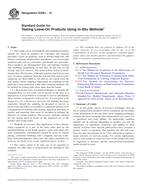
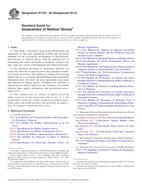 ASTM D7103-06(2013)..
ASTM D7103-06(2013)..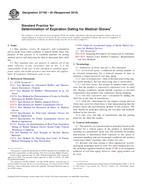 ASTM D7160-05(2010)..
ASTM D7160-05(2010)..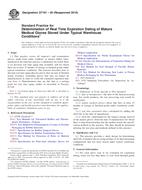 ASTM D7161-05(2010)..
ASTM D7161-05(2010)..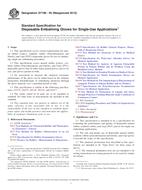 ASTM D7198-05(2012)..
ASTM D7198-05(2012)..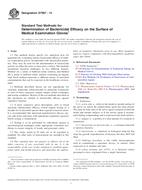 ASTM D7907-14
ASTM D7907-14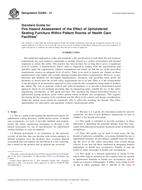 ASTM E2280-13
ASTM E2280-13
 Cookies
Cookies
